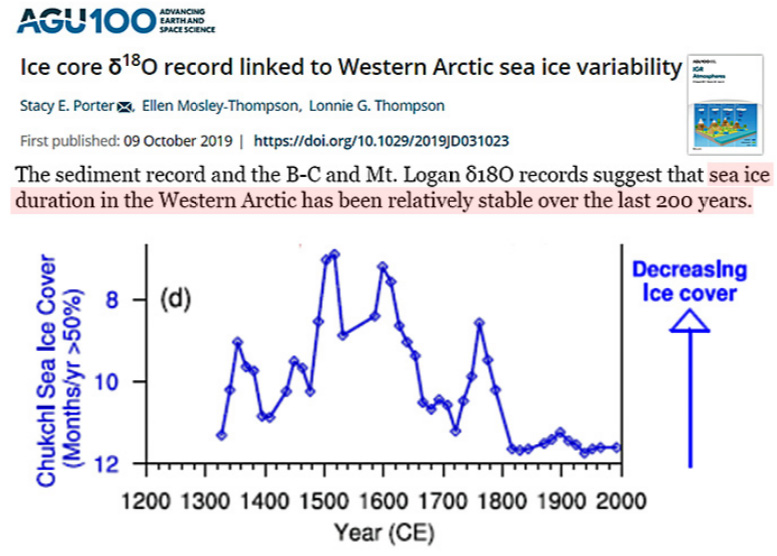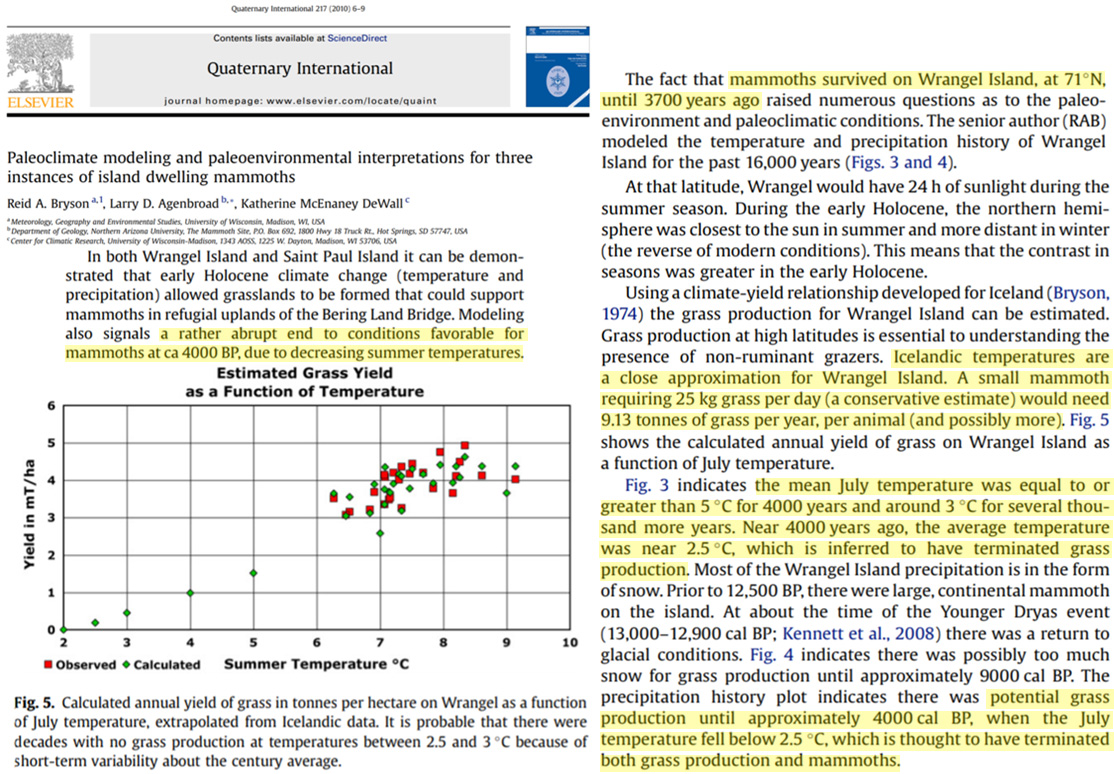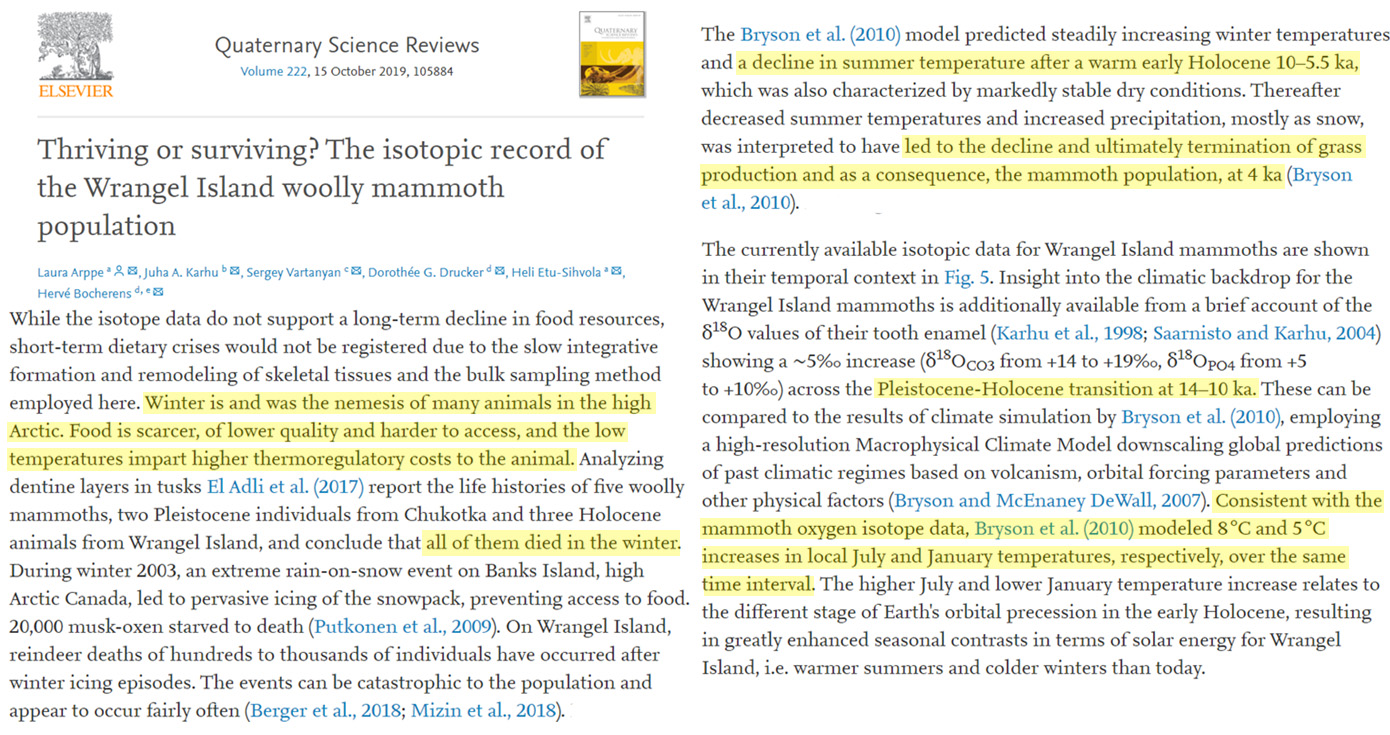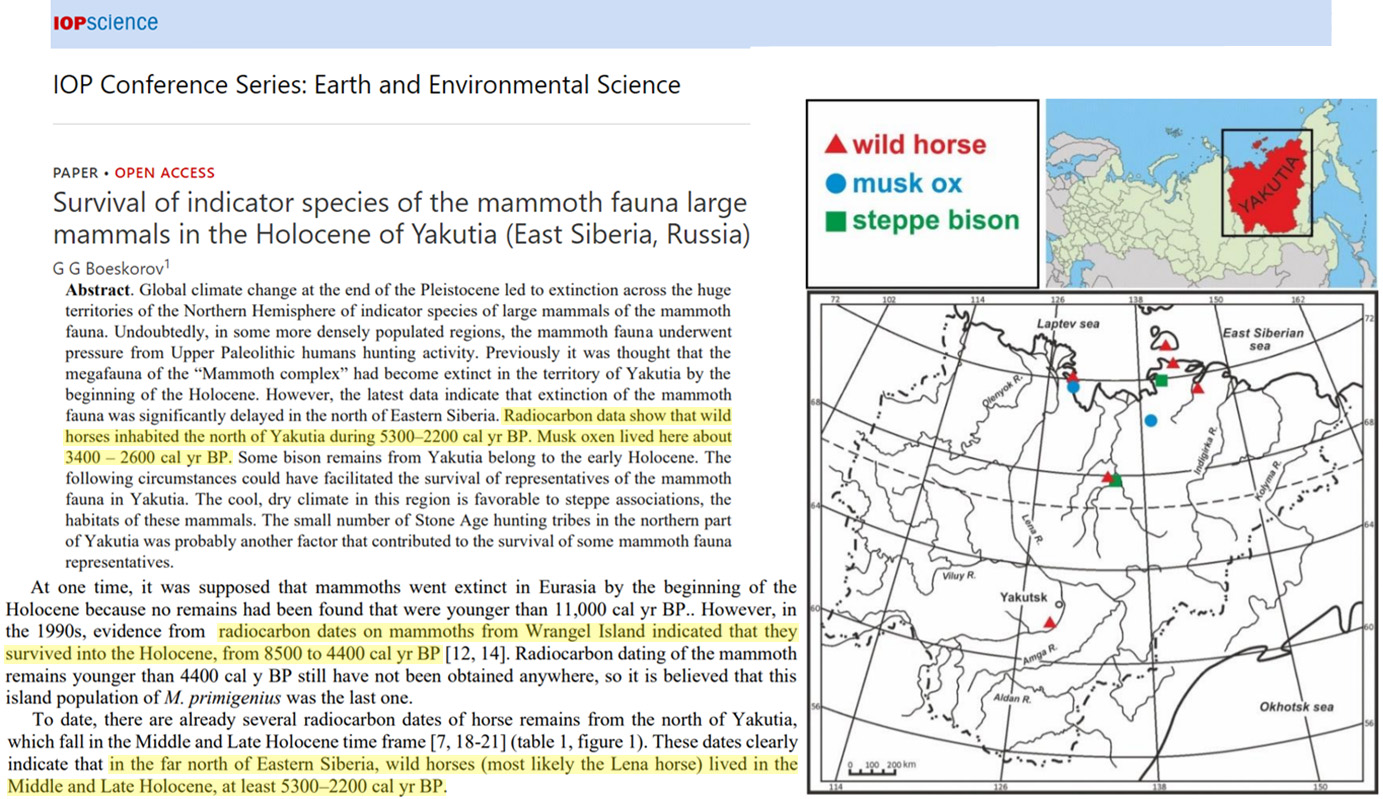Surface temperatures needed to have been much warmer than today to supply enough grass year-round for horses and mammoths to subsist in the Arctic through the Late Holocene.
Wrangel Island is located in the Arctic’s Chukchi Sea, which is covered in sea ice for all but a few weeks of the year today (Porter et al., 2019). As recently as a few hundred years ago, the Chukchi was sea ice-free 4-5 months per year, suggesting the Western Arctic is much colder today than it was even during the Little Ice Age.

Image Source: Porter et al., 2019
Mammoths lived in the Arctic until 3700 years ago
Until the 1990s, it was thought the Earth’s last wooly mammoths went extinct during the Pleistocene-Holocene transition about 15,000 to 10,000 years ago.
But the Arctic’s Wrangel Island is home to extensive mammoth remains. Radiocarbon dating indicates the wooly mammoth continued living on this island until 3700 years ago, or until the Arctic climate became too cold to provide enough grass year-round to sustain them (Bryson et al., 2010, Arppe et al., 2019).
According to Bryson et al., 2010, a small mammoth is modeled to have conservatively required 25 kg of grass per day to survive. Mean July temperatures decreased from above 5°C during the Early Holocene to below 2.5°C – the threshold for grass production – by about 4,000 years ago. Consequently, without enough year-round grass to feed on, the wooly mammoth died out.

Image Source: Bryson et al., 2010

Image Source: Arppe et al., 2019
Wild horses lived in the Arctic until ~2500 years ago
A new study (Boeskorov, 2020) provides further evidence the Arctic climate was hospitable to grass-eating megafauna until as recently as a few thousand years ago.
The remains of wild horses have been located north of the Arctic circle in the East Siberian Sea (Arctic Ocean) dating to 5300 to 2200 calibrated years before present. The northernmost Siberian climate is far too cold to sustain wild horses with enough food year-round today.

Image Source: Boeskorov, 2020
Modern warmth is not “unprecedented”
The geological evidence that the modern Arctic is still much colder than it was when CO2 concentrations were below 270 ppm a few millennia ago is robust.
Temperature reconstructions with hockey-stick-like shapes suggesting we are currently living in an “unprecedentedly” warm global climate need to be seriously re-examined in light of the extensive paleoclimate evidence contradicting this viewpoint.





Good book on the Mammoths https://www.goodreads.com/book/show/803994.Mammoths
Mammoths: Giants of the Ice Age
by Adrian Lister, Paul G. Bahn
Climate and People in the Prehistoric Arctic
Robert McGhee Archaeological Survey of Canada
https://web.archive.org/web/20160306155322/https://carc.org/pubs/v15no5/5.htm
“By about 7000 years ago the massive glaciers of the last Ice Age had retreated to the mountain peaks of the eastern Canadian Arctic. Tundra vegetation had become established, and was grazed by caribou, muskoxen, and, in some areas, by bison. The gulfs and channels between the arctic islands had long been at least seasonally ice-free, and provided a home to populations of seals, walrus, and whales. There is considerable evidence that for the next 3500 years the arctic climate was noticeably warmer than today, the tree-line was north of its present position, sea ice was less extensive, and animal populations were large and well established.”